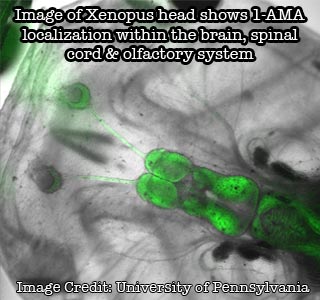
Researchers are said to have successfully tested this fluorescent anesthetic compound in tadpoles. Transparent, albino tadpoles were used for the purpose of the research. The transparency of the animals made it possible for the researchers to follow the fluorophore tag in the brain of the tadpoles. Imaging the compound in vivo or from within the organism may further even aid in better understanding the physiological effects of the anesthetic.
Once an anesthetic is administered, it is not known where and how it travels in an organism. Other factors which remain unknown are as to which cells and in what concentrations the anesthetics travel in the organism. Since anesthetics are said to be incapable of strongly binding to their chemical targets, looking for new targets in the central nervous system may turn out to be difficult. These targets may even to a certain extent, be responsible for some of the unintended side effects of anesthetics.
It has further been stated that the researchers by making use of a compound called the fluorescing compound 1-aminoanthracene, or 1-AMA, constructed a high-throughput assay. This assay was used for the purpose of testing new anesthetic compounds. This assay is believed to be capable of permitting the researchers to look for new anesthetic drugs and new molecular targets for anesthetics. Along with this, the assay may also be of help in producing high-resolution images of the compounds in action. The discovery of how the compounds work in the human body may further lead to the discovery of how anesthetics work.
Roderic G. Eckenhoff, MD, vice chair for research and the Austin Lamont Professor of Anesthesiology and Critical Care, School of Medicine, University of Pennsylvania, says that, “We don’t know much about how anesthetics work at a molecular level. Thus, the development of new anesthetics has become a stagnant field. This new tool will allow for the high-throughput screening of novel drugs.â€
This research is believed to have been commenced due to the emerging need for novel and effective devices in the health care industry. The development of these novel tools were desired for the purpose of uncovering and experimenting new anesthetics and better understanding the process in which they function.
These research findings are published online in the Proceedings of the National Academy of Science.
